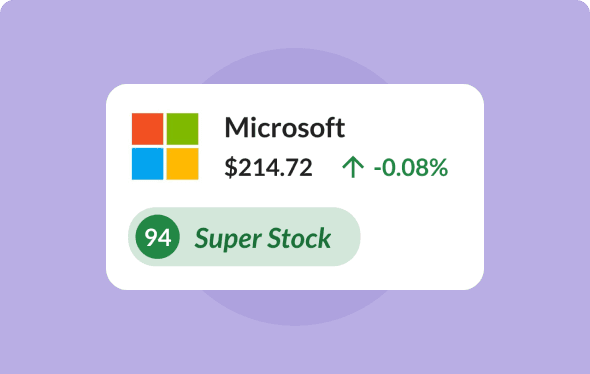When less is more: choice overload and the benefits of focus
Whenever I write about behavioural flaws, I usually get to rely on a legion of academic research papers to explain them. This time I’m starting with some first-hand experience.
Over the past several years (perhaps longer) I’ve been dealing with a pretty strange psychological flaw of my own. It’s probably one of many.
For the most part, I’m not troubled by it day-to-day. But at certain moments it freezes me in a wave of indecision. I act bizarrely and ultimately make nonsensical and unsatisfying decisions. I can see (and laugh about) the problem, but it’s not easy to stop it.
It’s all to do with parking my car.
I own a fairly regular family-sized SUV. I guess like many others on the road, I overrate my own driving skills (another flaw). In a busy car park with just one space, for example, I’d back myself to do a great job of parking in it - no matter how tight or awkward it is - and be very happy with the result.
The problem isn’t with packed car parks though, it’s with empty ones.
In an empty car park, with maybe only a few cars around, I become completely stumped about where to park. I drive past space after space - occasionally even driving up to a higher storey - “in search” of somewhere I’d be happy to park. This infuriates my wife and leaves my kids staring at me in bemusement.
I’d like to say that this strange behaviour is down to a rational desire to find the optimum space. Perhaps one nearest to the ticket machine? Or nearest to the exit? Or away from where other people might park next to me? But I’m not sure it is. And when I do finally settle on a space, I’m never really that happy with the choice.
It all seems a bit ridiculous. When I mention this to family, friends and random acquaintances, the replies range from sympathy to confusion. But every so often I also get nods of empathy. It seems I’m not alone with this parking thing.
But there’s more to this than just empty car parks...
A tyranny of choice
Twenty years ago, two psychologists - Sheena Iyengar and Mark Lepper[1] - did a study involving jam. For conserve aficionados, the jam they used was the Royal Warrant holding British brand, Wilkin & Sons - and with good reason.
At the time, Wilkin & Sons boasted 28 varieties of jam. This made it an ideal brand to test how customers in a high-end grocery store in California would respond to a taste-test. The broader question was whether the wide choice on offer would -- as psychologists back then generally thought -- encourage customers to buy more?
The answer to this and other similar tests in the research took many by surprise. In fact, two decades later, the jam experiment remains one of the best known studies into consumer behaviour.
It had set out to explore whether wide choice really is as desirable and motivational as you might think. A lot of earlier psychology studies certainly presumed that it was.
But this research found the opposite. A stand with 24 varieties of jam attracted more customers to stop and look than a stand with just six varieties did. But when it came to buying, 10 times as many customers that encountered the smaller stand actually went and bought jars of the jam (30% as opposed to just 3%). And those buyers were happier with their decisions, too.
So while the wide choice was initially eye-catching, it was the smaller choice that ultimately achieved higher sales. It was, the researchers said, down to choice overload.
These findings supported the idea that as humans, we have a hard time managing complex choices. Faced with too many options, we start experiencing conflict, put off making decisions, look for alternatives, opt for the default or just don’t make a decision at all. And when we do make a decision, we use only simple heuristics (potentially daft or irrational reasons) to do it.
So choice overload makes a lot of sense in the context of car parks and grocery stores, but it also fits well with investing.
The risks of too much choice
At the time of writing there are 2,000 stocks quoted on the London Stock Exchange (6,000 on the New York Stock Exchange and Nasdaq), and so you could argue that individual investors (buying individual stocks) always face massive choice overload. It’s definitely possible to see how the issue could lead to poor decision making.
For instance, relying on simple heuristics to make investing decisions might mean acting on stock tips or broker recommendations or bulletin board ideas. But these options can be financially perilous. A better route might be to work-up a strategy and use pre-prepared checklists and screens to help guide buying decisions instead.
It’s also possible to draw a link between choice overload and studies that show how individual investors tend to be under-diversified in their portfolios, or use naive diversification.
With under-diversification the risk is simply sticking with a small number of existing holdings (because of familiarity bias or over-confidence), to the detriment of adequate diversification and good risk management.
With naive diversification, the risk is using ‘naive’ rules (simple heuristics) to guide the diversification. Without a sound strategy, this could potentially result in extreme allocations to certain factors such as ‘size’ and ‘risk’, or overexposure to particular sectors. Again, a solid strategy and plan is called for.
A takeaway is that without a reliable strategy for managing decisions, there’s a risk that too much choice can lead to poor decisions - or even no decisions at all. Evidence shows that human instincts tend to mean that we welcome lots of choice. Yet when it comes to acting on that choice, and making satisfactory decisions, it seems that less is more.
Keep your focus with the help of watchlists
Overcoming the challenges of too much choice is made easier with investment tools including screens and watchlists. Screens, for example, can be used to narrow down your options - leaving you with a pool (or pools) of stocks from which you can select the most promising to add to your portfolio.
Similarly, watchlists are a handy feature which can help keep you focused.
At Stockopedia you can build your own watchlists using the Folios tool and adding stocks that have caught your eye, but you perhaps aren't ready to add to your portfolio yet. These tools should be set up with reference to your investment strategy and personal preference. Before you start, you should spend some time defining your investment goals (this article can help). A well managed set of watchlists can act as a feeder to your portfolio.


